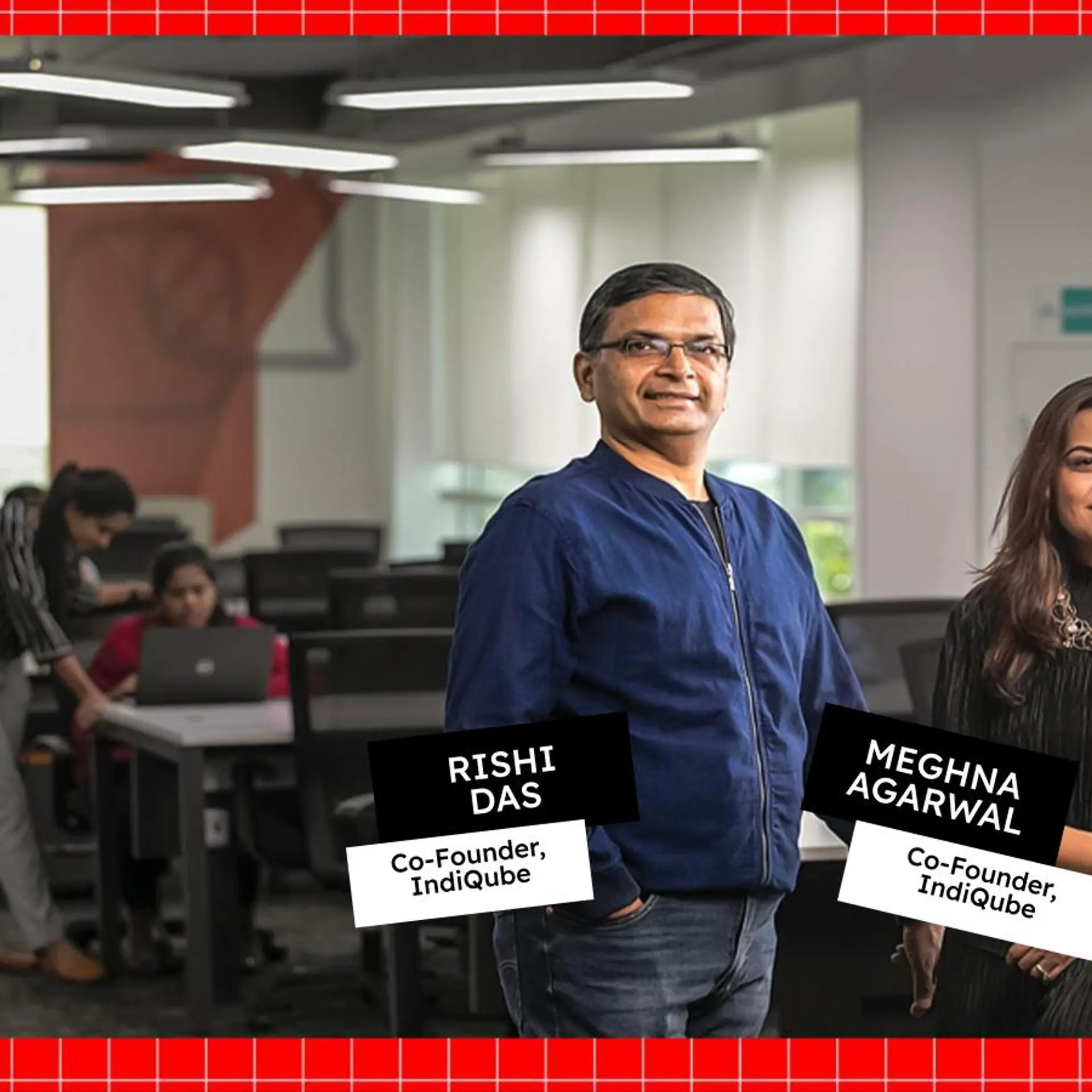
Beams Fintech Fund
View Brand PublisherBetting on disruptors in India’s BFSI sector: Insights from Sagar Agarvwal of Beams Fintech Fund
Sagar Agarvwal, Co-founder and Managing Partner of Beams Fintech Fund, talks about the immense opportunity in the landscape of fintech investments, and its role in propelling the sector’s further growth.
The fintech and financial services sector has grown exponentially in the last few years, and yet much more is to be achieved. In India, the sector contributes nearly one-third of the GDP and $1.3 trillion in market cap.
Additionally, disruptive products by fintech companies, aided by innovation-friendly policies have made India one of the fastest-growing financial services markets in the world. As a result, there are ample opportunities for investments in this space.
Diving into this is Sagar Agarvwal, Co-founder and Managing Partner of Beams Fintech Fund.
Question (Q): Sagar, why did Beams Fintech Fund choose to invest in fintech and financial services amid India's diverse investment opportunities?
Sagar Agarvwal (SA): The size of the fintech and financial services industry is often underestimated by most. Today, BFSI contributes one-third of the GDP, with Bank NIFTY holding 35% weight in the Index. Moreover, the sector grows secularly at 1.5 times the GDP and leads with most IPOs, M&As, and Secondary Sales in India.
Globally most unicorns are in the BFSI space. We anticipate that India will touch 75 unicorns in the fintech and financial services space in the next three years and 150 by the end of 2030. UPI today facilitates $2 trillion in annual payments, transforming traditional banking transactions while GST payments exceed $250 billion, 6% of GDP.
Moreover, India holds $2 trillion in bank deposits, $1 trillion in gold reserves, and borrows $2-3 trillion annually. Given such a large contribution of the sector and its expected continued growth over the next decade, we believe no other sector today provides an opportunity of this scale and size and be able to create significant outcomes as an Investment Fund.
Q: In India's competitive financial services sector with over 9,000 companies, how does Beams select investments that have the potential to become category leaders?
SA: The sector is undeniably competitive. However, the pie is very large for everybody to thrive and grow. India today has 31 private banks, over 1,500 PSU, regional, co-operative banks and societies, over 400 systematically important NBFCs and more than 5,000 other non-lending businesses each carving out niches within specific segments and geographies. Not to mention, there are only 200 companies listed in public markets creating a large opportunity to list tomorrow’s market leader.
We identify opportunities not only horizontally but also vertically within each segment. Our focus is primarily on three categories within BFSI—BFSI SaaS, financial services (primarily lending), and tech (non-lending businesses). We've segmented these into further 30 subcategories. Our approach is akin to public market investing, which combines top-down and bottom-up analysis to evaluate profit pools and sustainability within each sub-category.
Q: What benefits do financial institutions bring as investors to a fintech-focused fund?
SA: India's banking ecosystem fosters inclusivity, with banks and tech firms collaborating to enhance digital financial services. Fintechs excel in customer engagement but face profitability challenges due to competition, emphasising the need for collaboration.
Having banks, NBFCs, and insurance companies as our Fund investors enables closer monitoring and deeper collaborations, especially in slower-to-adapt segments. Incumbents offer expertise and balance sheet strength, while new-age platforms bring agility and innovation.
We aim to be the leading emerging market platform, with financial institutions from India, Asia, the Middle East, and Africa as investors and collaborators.
Q: How do RBI regulations in the fintech and financial services sector influence your portfolio selection?
SA: Regulation is crucial for the financial sector, and India has one of the most progressive regulators. The RBI expects compliance from all financial institutions without bias. In the past year and a half, the RBI has further strengthened the sector, clarifying what's permitted within regulatory licenses.
At Beams, we've always invested in regulated businesses and encourage our companies to do the same. Our current portfolio, consisting of regulated businesses, is adapting well. To ensure compliance, we're bolstering systems and processes, incorporating internal auditors, appointing ex-regulators to company boards, and establishing risk management committees.
Q: Can you share more about your current portfolio and the broader thesis of investing in them?
SA: Our investment strategy has always revolved around large macro themes for the decade, such as healthcare, education, real estate, logistics, travel, commerce, and MSMEs. To capitalise on these themes, we invest in fintech, financial services, and B2B SaaS sub-segments catering to these sectors.
Currently, our portfolio includes investments in , , , and , with three more opportunities in the pipeline across study abroad education financing, affordable housing, and diversified lending space.
For instance, Niyo is pioneering a modern banking platform tailored for 30 million affluent Indian travellers. Progcap addresses MSMEs' supply chain working capital needs where credit gap is more than $250 billion. Credgenics offers IT services and software solutions for digitising collection processes for more than 100 banks and financial institutions. Insurance Dekho facilitates insurance product distribution across 1,300 cities by aggregating more than 250,000 IFAs, aligning with the growth in healthcare in India.
Each of these companies has the potential to revolutionise the consumption of traditional financial services products and services in India, benefiting from the overall growth in various themes.
Q: Could you provide further details on the segments within the fintech and financial services sector that you are optimistic about, as well as those that the fund intends to avoid?
SA: Our bullish outlook extends to over 30 categories within the fintech, financial services, and B2B SaaS sectors. For instance, we're particularly excited about the housing finance space in India, the study abroad education financing market, and the MSME Lap segments within the lending space.
In non-lending, we are observing the emergence of new-age wealth firms tailored to the financialisaton of savings in India, banking architecture is undergoing a transformation with microservices cloud-native solutions and innovative SaaS companies replacing traditional infrastructure and pipelines.
In our investment approach, we tend to steer clear of overcrowded markets. We exercise caution in segments such as payments and the pure-play consumer BNPL segment or only unsecured lending.
Q: Looking ahead, what are the key milestones and strategic priorities for Beams in the coming years, and how do you envision solidifying Beams' position as a leader in the fintech investment space in India?
SA: Currently, we are focusing on closing our first fund and should be able to achieve our target raise of over $100 million making us the biggest debut thematic fund. Along with it, we are focusing on our next four to five investments to complete by the end of the year. In the long term, we want to build Beams as a go-to capital provider in the financial services, fintech and BFSI SaaS space.
We are deepening our ecosystem with more banks, NBFCs and insurance companies across emerging markets becoming investors with us enabling us to create value for our portfolio companies.
Our vision is to be recognised as a team and a brand that is able to build sustainable businesses within the financial services ecosystem and are creating market leaders of tomorrow.







